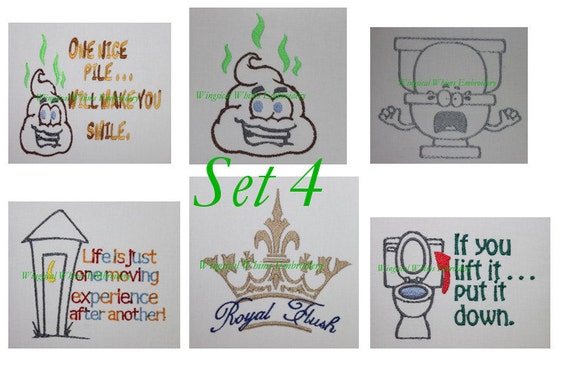
In December 1973 after one of Carson’s jokes (Johnny Carson, one of America’s most loved comedians) scared consumers into stockpiling supplies.

In 1973, America experienced first toilet paper shortage.
Word of the day toilet paper free#
In 1935 Northern Tissue invented splinter free toilet paper. Today two-ply toilet paper is the standard in many countries. Andrew's Paper Mill in England began selling the first two-ply toilet paper. In 1928, German, Hans Klenk become the first toilet paper rolls seller in Europe. Company became the leading toilet paper company in the world. In 1921 Waldorf brand represented 64% of Scott's total case sales. In 1896, Irvin's son Arthur Scott joined the Scott Paper Company. short for 'bumfodder' or toilet paper, and a term extended to anything that is. In 1885 Oliver Hewlett Hicks patented package of toilet paper and the manufacturing process. Etymological Entertainment For Every Day of the Year Susie Dent. That toilet paper was sold in boxes of individual squares. In 1880 the British Perforated Paper Company began selling toilet paper. He was the first that used the perforated toilet roll instead of the common flat sheets. In 1879, Walter Alcock, a British businessman, created toilet paper on a roll, too. In 1897, company began selling and marketing standard perforated toilet paper on a roll. In 1877 he founded the Albany Perforated Wrapping Paper Company. In 1871, Zeth Wheeler patents rolled and perforated toilet paper. In 1890 the Scott Paper Company made its Waldorf brand toilet paper in rolls. The Scott Paper Company's toilet paper was the first toilet paper sold in rolls. In 1879, Scott brothers founded the Scott Paper Company. Thomas Seymour, Edward Irvin and Clarence Wood Scott began selling some kind of toilet paper in Philadelphia in 1867. Gayetty named it “Gayetty’s Medicated Paper.” Joseph Gayetty printed his name on every sheet. This first toilet paper in flat sheets was medicated with aloe. Joseph founded The Gayetty Firm for toilet paper production in New Jersey and his first factory-made toilet paper was "The Therapeutic Paper”. His toilet papers were loose, flat, sheets of paper. Gayetty created the first commercially packaged toilet paper in 1857. In this case, Hinrichs says he hopes these words soon become a thing of the past.Joseph C. Only a few stick around if there’s a “continued need,” he said. Hinrichs says new words are created every day, but they usually don’t last. They came out of the combined calamity of COVID-19 and the February winter storm and statewide power outage: “snowvid21” and “ERCOT-palypse.” Two pandemic-related words were born in Texas. “And only when something has been around for a few hundred years does English drop the white space in the spelling. “In German that would automatically then be spelled without a space between those words, whereas a less complicated language like English leaves a wide space between those words,” Hinrichs said. Hinrichs, a native German speaker, says he was tickled by words like klopapierhamstern, or “toilet paper hamster,” and m askenpickel, or “mask pimple.” Compound words bring multiple words together, without spaces. German-speakers, on the other hand, are masters at using compound words to describe pandemic life. Hinrichs is director of the Texas English Project at the University of Texas at Austin.Įnglish-speakers have come up with clever terms like “covidiot” and “quarantini” – words Hinrichs says are “blends.”


Linguist Lars Hinrichs says these words are created spontaneously and help capture the moment more succinctly. The pandemic has been a time ripe with new words to describe the strangeness and trauma billions of people have experienced over the past year.


 0 kommentar(er)
0 kommentar(er)
